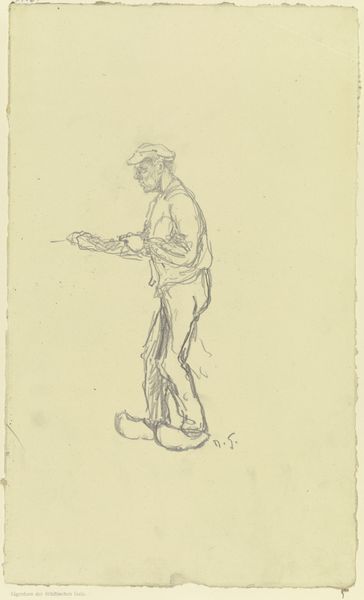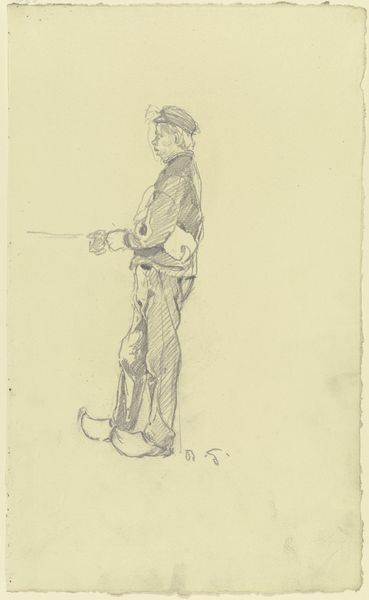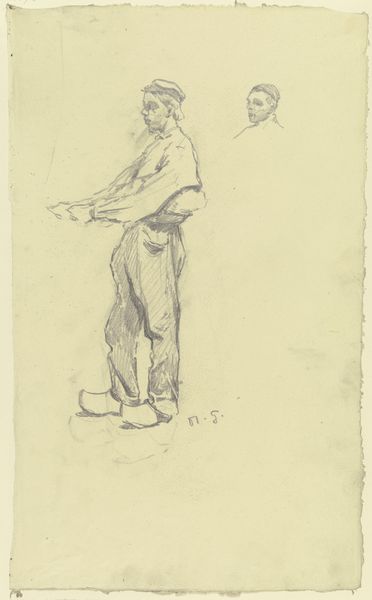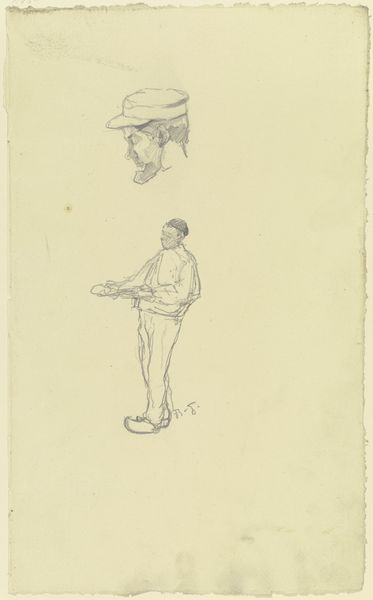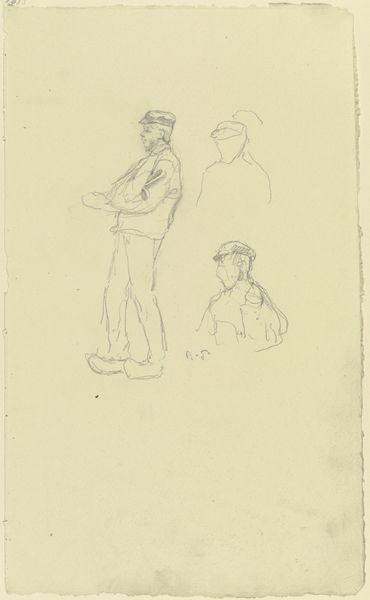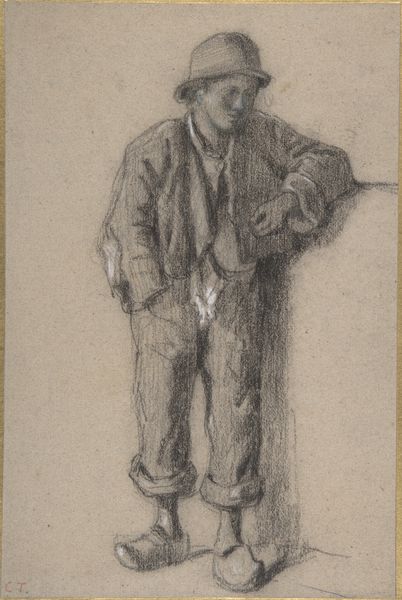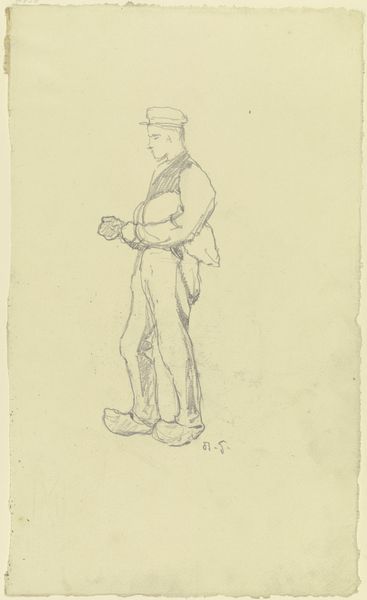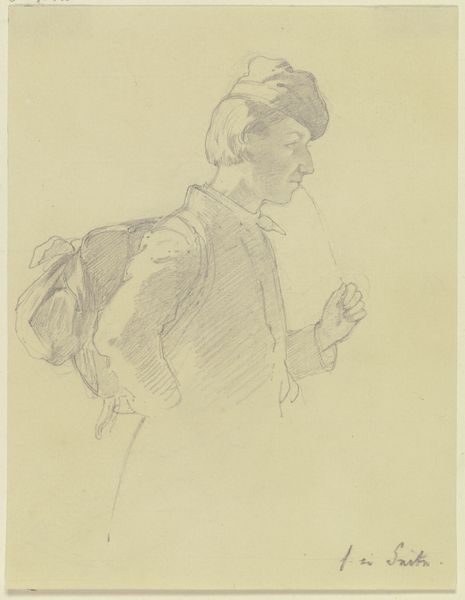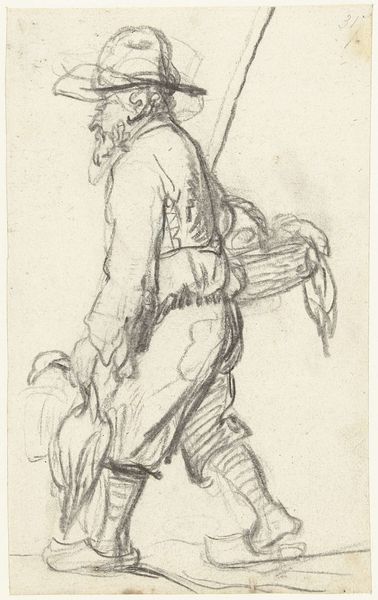
drawing, pencil
#
drawing
#
16_19th-century
#
pencil
#
realism
Copyright: Public Domain
Editor: Here we have Rudolf Gudden’s "Ein Arbeiter aus der _Großen Spinnerei von Edam_," or "A Worker from the Great Edam Spinning Mill," made around 1894. It’s a pencil drawing that feels like a quick sketch, capturing a sense of the worker’s weariness. What stands out to you about this piece? Curator: I’m immediately drawn to the materiality of the artwork itself, even as it depicts the material realities of labor. Look at the quality of the pencil lines, the artist’s touch, and consider the paper itself, all readily available commodities of the late 19th century. But where did those materials come from, who produced them, and under what conditions? Editor: I see what you mean. The sketch seems to be about one worker, but it’s part of a bigger system. How does the depiction of the worker himself relate to this? Curator: Notice the details - his worn clothing, the tools he likely used. The very act of depicting a worker from the Great Edam Spinning Mill elevates the everyday labor that underpinned industrial society, while also serving as a document of a particular worker at a particular historical moment. Editor: So, it’s about elevating the ordinary? Curator: More than that. It asks us to consider the relationship between the worker, the spinning mill, and the products that emerged. Were these materials consumed locally? Globally? Did the means of making ultimately justify its economic and social consequences? Editor: I hadn’t considered the journey of materials beyond the artwork. Thank you. Curator: Understanding art requires us to recognize its embeddedness within economic, social, and material systems. It is not created in a vacuum.
Comments
No comments
Be the first to comment and join the conversation on the ultimate creative platform.
